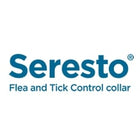
Mange in dogs is often easy to recognize. Depending on the type, affected dogs may experience intense itching, hair loss, and crusty skin patches. This condition can be uncomfortable and, in some cases, difficult to prevent. While a balanced diet that supports skin health can help, mange can still develop.
The good news is that with proper veterinary care, you can help your dog recover and find relief from mange.
In this guide, we'll cover the causes, symptoms, and effective treatment options to help your furry friend heal.
What is Mange in Dogs?
Mange is a skin condition in dogs caused by microscopic mites that infest the skin, leading to irritation and discomfort. These mites, closely related to ticks, are parasitic organisms from the Arachnida family.
While mange symptoms may vary, dogs have two primary types of mange, each with its own causes and effects. Understanding these types can help treat and identify the condition effectively.
Type of Mange in Dogs?
Dogs can suffer from two main types of mange, each caused by different mites and requiring specific treatment approaches. These include:
Sarcoptic Mange (Canine Scabies)
Sarcoptic mange, commonly referred to as canine scabies, is a highly contagious skin condition caused by Sarcoptes scabiei mites. Unlike demodectic mange, these mites burrow deep into the skin, where they lay eggs. As the eggs hatch within weeks, the growing mite population feeds on the skin, leading to intense irritation and discomfort.
These mites are the same parasites responsible for scabies in humans, making early detection and treatment essential to prevent spread.
Symptoms of Sarcoptic Mange
- Intense itching and scratching
- Crusty, yellowish skin patches
- Skin inflammation and redness
- Hair loss
- Rashes and yeast infections
- Dandruff, oozing sores, and extreme weight loss in severe cases
Symptoms typically appear between 10 days to 8 weeks after exposure. Dogs' most commonly affected areas include the legs, ears, chest, and belly.
Prompt diagnosis and treatment from a veterinarian can help manage both types of mange effectively, ensuring your dog's health and comfort.
Demodectic Mange
Demodectic mange is triggered by Demodex mites, naturally present in a dog's hair follicles. In healthy dogs, the immune system regulates their population. However, these mites multiply uncontrollably when immunity weakens, causing skin irritation and discomfort.
Puppies with immature immune systems are more susceptible to demodectic mange, though mild cases often resolve independently or with minimal treatment. On the other hand, older dogs, sick pets, and strays with compromised immunity face a higher risk of severe and widespread infestations.
Symptoms of Demodectic Mange
- Persistent scratching
- Red, irritated skin
- Scaling and crusty patches
- Hair loss (either in small patches or over the entire body)
The most commonly affected areas include the face, legs, and trunk.
How Do Dogs Get Mange?
Mange in dogs occurs due to tiny mites that infest the skin, causing itching, irritation, and hair loss. The method of transmission varies based on the type of mite responsible for the condition:
- Sarcoptic Mange (Canine Scabies): This highly contagious form spreads through contact with infected dogs, shared bedding, or close play. While humans can get scabies from dogs, the mites cannot complete their life cycle on human skin, making symptoms mild and temporary.
- Demodectic Mange: Puppies acquire Demodex mites from their mother shortly after birth. These mites naturally exist on a dog's skin, but an overgrowth occurs when the immune system is weak.
If your dog has sarcoptic mange, keep them separated from other pets and family members until they complete treatment. To minimize the risk of spreading mites, wear gloves when handling your dog and wash their bedding regularly.
How to Treat Mange in Dogs
Mange is treatable, especially when detected early. Preventative care and proper hygiene can reduce the risk of infestation, but if your dog develops mange, veterinary treatment is essential.
Preventing Mange
Since mites thrive in weakened immune systems, keeping your dog healthy can help prevent mange:
- Provide a nutrient-rich diet to support skin health.
- Maintain good hygiene with regular grooming.
- Create a clean, low-stress environment with mental and physical enrichment.
- Schedule routine vet checkups to catch issues early.
Even with these precautions, some dogs may still develop mange. If that happens, don't worry—your veterinarian can guide you through effective treatment options.
Diagnosing and Treating Mange
Veterinarians use different diagnostic techniques and treatments depending on the severity and type of mange.
Common Diagnosis & Treatment Methods
- Skin Scraping: A small skin sample is collected and examined under a microscope to check for mites.
- Medicated Shampoos & Dips: Special shampoos help soothe irritated skin and remove mites. Lime-sulfur dips are also effective in healing affected areas.
- Prescription Medications: Your vet may prescribe oral or topical treatments to kill mites and reduce inflammation. If secondary infections develop, antibiotics may also be needed.
- Additional Testing: For dogs with demodectic mange, vets may perform blood tests or radiographs to check for underlying immune system issues.
Timely treatment and proper care can speed up your dog's recovery from mange and reduce the risk of future infestations. Contact your veterinarian for the most effective treatment plan if you spot any symptoms.
Preventive Medications for Mange in Dogs
Mange in dogs can be prevented with regular veterinary checkups and consistent preventative care. Routine vet visits help detect underlying health issues early, preventing them from becoming serious.
Effective flea and tick preventatives are among the best ways to protect your dog from mange. These treatments control parasites and help keep mites that cause mange at bay. Some recommendations include:
- Bravecto (Fluralaner) – A chewable tablet that protects against fleas, ticks, and mites (including those that cause mange) for up to 12 weeks.
- NexGard (Afoxolaner) – A monthly chewable that kills fleas, ticks, and mites, including those responsible for sarcoptic and demodectic mange.
- Simparica (Sarolaner) – A monthly oral tablet that protects against fleas, ticks, and mange-causing mites.
- Revolution (Selamectin) – A topical spot-on treatment that protects against fleas, heartworms, and sarcoptic mange.
- Advantage Multi (Imidacloprid + Moxidectin) – A monthly topical treatment that prevents heartworms, fleas, and mites (including those causing sarcoptic mange).
Can These Medicines Prevent Demodectic Mange?
Demodectic mange is caused by mites naturally present on a dog's skin, and it typically occurs when the immune system is weak. While NexGard, Bravecto, and Simparica can help control and treat demodectic mange, strong immunity is the best prevention.






